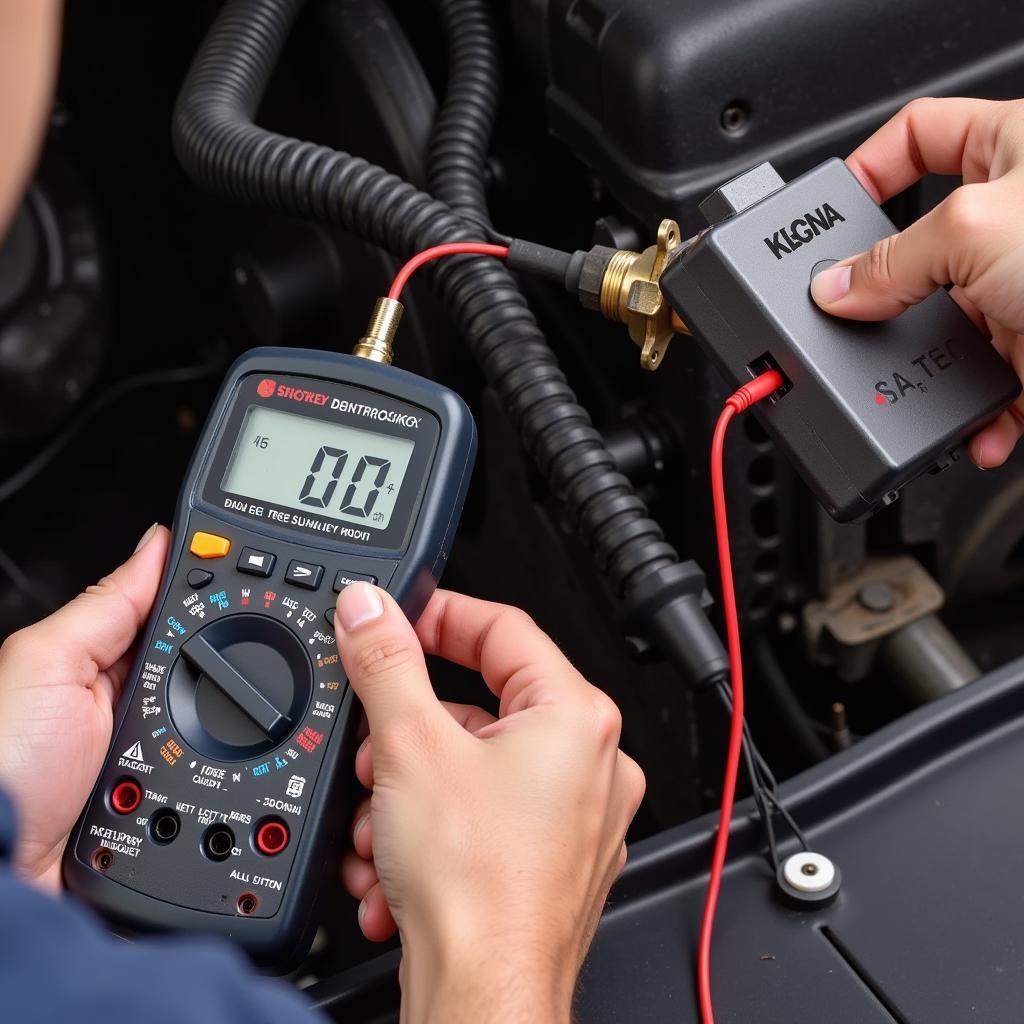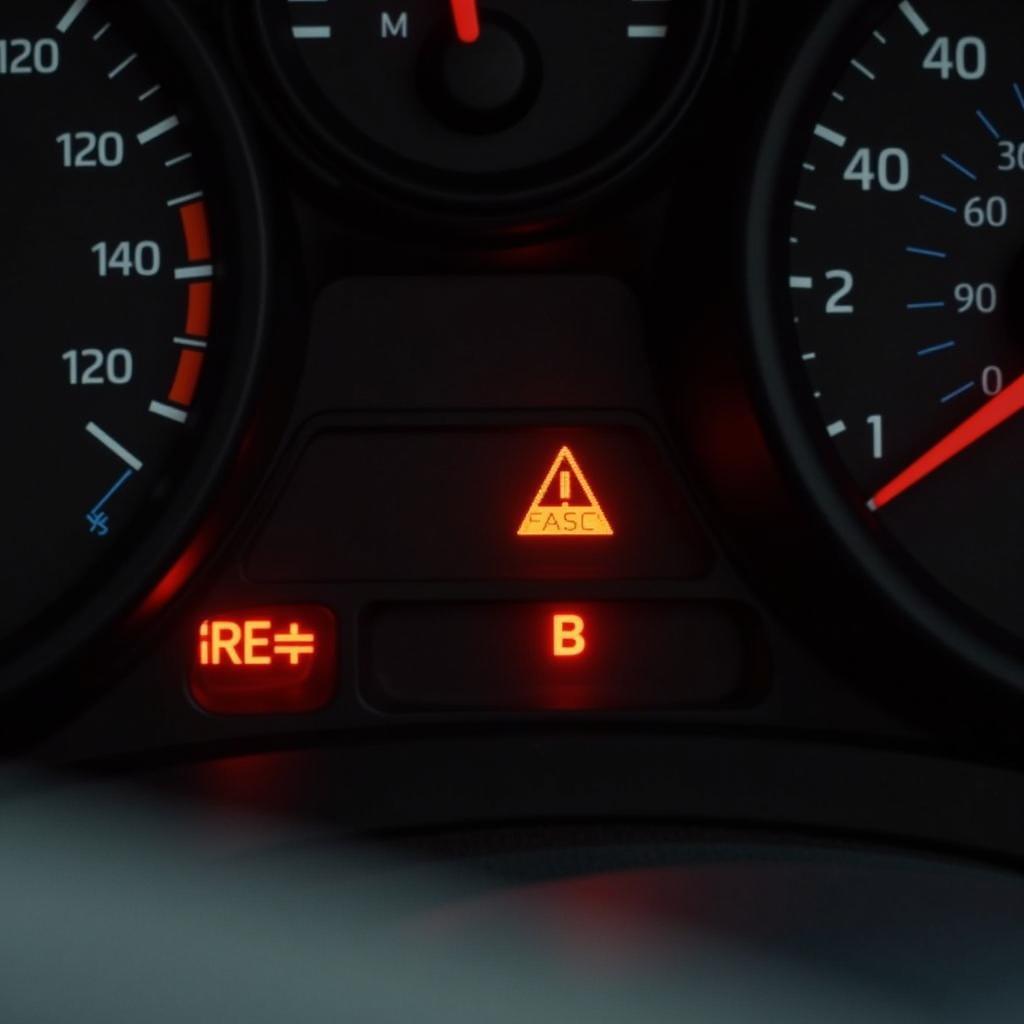The brake system warning light is a crucial indicator of potential problems with your vehicle’s braking system. Knowing where this light is located and what it means can help you address issues promptly and maintain safe driving conditions. See our guide on the brake fluid warning sign.
Understanding the Brake System Warning Light
This light, often a red exclamation mark enclosed in a circle or parentheses, or sometimes the word “BRAKE,” illuminates on your dashboard to alert you to several possible issues. It could indicate low brake fluid, a problem with the anti-lock braking system (ABS), or a malfunction within the brake system itself. Ignoring this light can lead to serious safety risks, so it’s essential to understand its location and significance. You can learn more about specific issues, like the audi brake warning light q7.
What Does the Brake Light Mean?
Why is my brake light on? The brake warning light can signify several problems. Primarily, it indicates low brake fluid, which could be due to a leak or worn brake pads. It can also indicate a malfunctioning ABS, affecting your car’s ability to prevent wheel lockup during braking. Finally, the light can simply be triggered by the parking brake being engaged.
Common Causes of the Brake Warning Light
- Low Brake Fluid: This is the most common cause. Check your brake fluid reservoir; if it’s low, you likely have a leak.
- Parking Brake Engaged: Ensure your parking brake is fully released. Sometimes a slight engagement can trigger the light.
- ABS Issue: A problem with the ABS system can illuminate the brake warning light. This usually requires professional diagnosis.
- Faulty Brake Light Switch: A malfunctioning switch can trick the system into thinking the brakes are engaged. You can find more details on specific models like the 79 ford f150 brake warning light switch.
Troubleshooting the Brake Warning Light
If the light comes on, first check your parking brake. If it’s disengaged, check your brake fluid level. If low, top it off and monitor for further drops. If the fluid level remains stable, have a professional mechanic inspect the system for leaks. If the brake fluid level is full and the parking brake is off, you might have a more serious issue, such as a faulty ABS system or brake light switch. Learn how to address specific issues like how to turn off brake warning light on mini one.
“A consistent brake warning light should never be ignored,” advises automotive diagnostics expert, David Miller. “It’s a crucial safety indicator that requires prompt attention to prevent potential braking failures.”
Where to Find the Brake Warning Light
The brake system warning light is typically located on the instrument cluster, directly in front of the driver. It’s usually red and features a universally recognized symbol – either an exclamation mark inside a circle or the word “BRAKE.” Its prominent position ensures immediate visibility. For more details on switch locations, see our guide on typical brake system warning light switch locations.
“Understanding the location of your brake warning light is paramount,” says Sarah Chen, an experienced automotive technician. “It’s the first line of defense against potential brake issues, allowing for timely intervention and safer driving.”
Conclusion
Knowing where the typical brake system warning light is located and what it signifies is crucial for maintaining vehicle safety. Addressing the underlying issue promptly can prevent serious braking problems and ensure safe driving conditions. Don’t ignore the brake warning light; it’s there to protect you.


